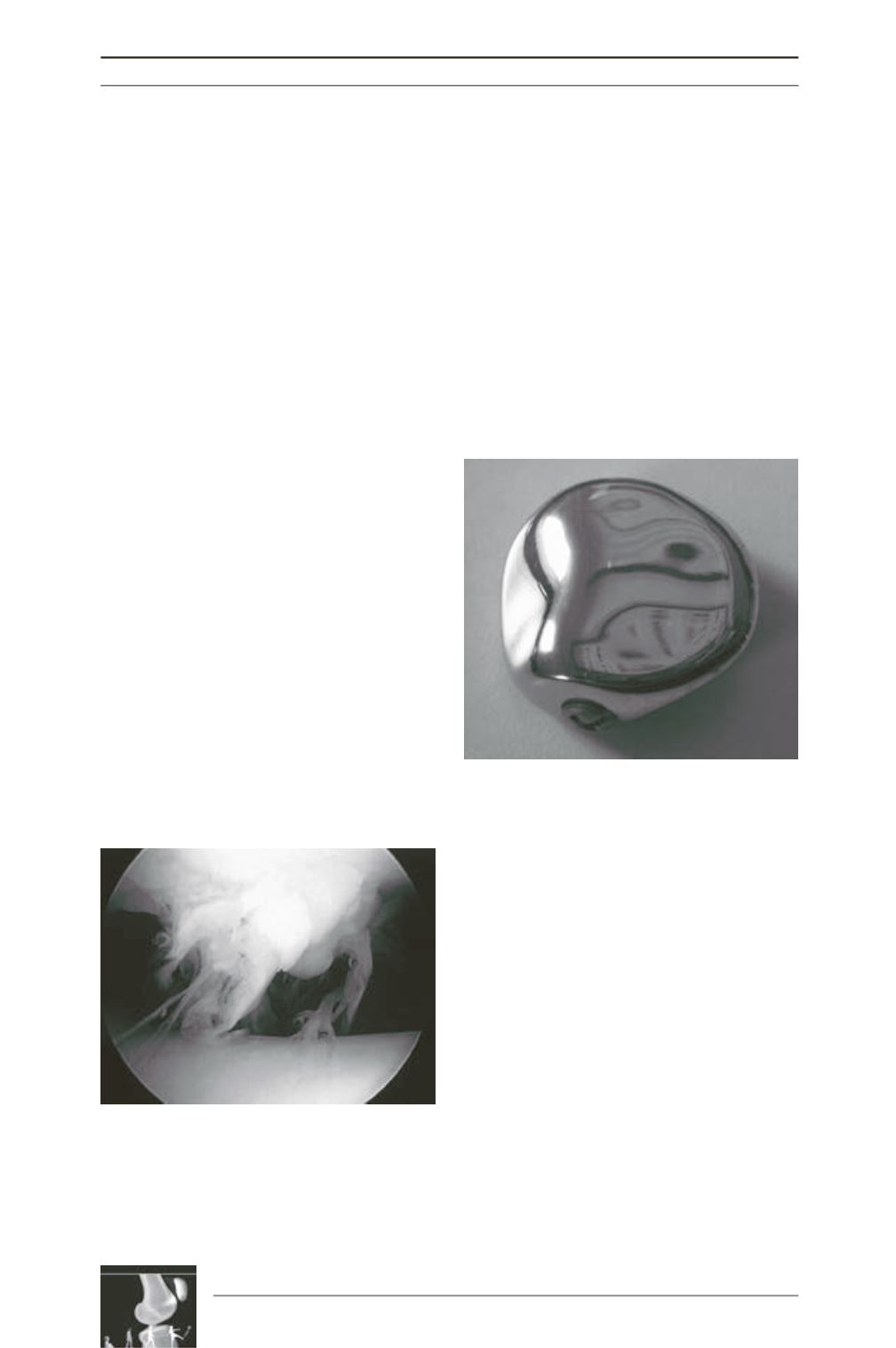

W.B. Leadbetter
280
associated with aging, although the two tissue
pathologies are similar, but not entirely identical
[3]. Hence, young patients (a class increasingly
difficult to define) may display premature
patellofemoral wear. In 1908, Budinger excised
degenerative patella articular chondral tissue
which he described as “chondropathy” (fig. A).
In 1928, Aleman from Scandanavia refined this
physical description in the operating room as
“chondromalacia patella post-traumatica”, a
post injury softening of the patellar articular
surface [1]. Cadaveric studies of Owre (1936)
and Hirsch (1941) would introduce the term,
“chondromalacia patellae” as a unique entity
[4]. No long after, Cox (1945) and Bronitsky
(1947) would include patella cartilage
fibrillation and softening in the potential causes
of patellofemoral pain syndromes [4].
Chondromalacia patellae would become
synonymous with patellofemoral arthralgia.
Lacking insight into the functional cost of
patellectomy and the secondary deleterious
effects on tibiofemoral joint durability, standard
of care drifted toward a “when in doubt, cut it
out” salvage for the damaged patella. Despite
isolated satisfactory outcomes, patellectomy
did not account for pain arising from trochlea
disease and there was a significant pattern of
persistent impairment after patellectomy [5].
Otherwise, in many ways, it was the age of the
“forgotten patella”.
That said, some surgeons were impressed
enough with the disability of patellofemoral
degenerative wear to advocate patella
resurfacing with skin, fat pad, or fascia.
In 1955, the earliest attempt at prosthetic
replacement of the degenerative patella surface
was reported by McKeever [6] (fig. B). This
metal hemiarthroplasty was used sparingly with
improvements by Worrell. Primitive design and
inherent failure of the trochlea cartilage surface
limited its application. The idea would not be
seriously reconsidered until 1979.
The Age of Awakening- the
Patellofemoral Renaissance (circa
1960s-early 1990’s)
A resurgence in surgical interest in salvaging
the painful patellofemoral joint began to stir in
the 1960’s. With the publication of their article
on the diagnosis and treatment for recurrent
patellofemoral instability, Trillat and Dejour
called attention to the importance of extensor
malalignment as a source of anterior knee pain
and its potential correction by redirection [7].
Hughston was another early voice, commenting
in 1960 and reiterating in 1984 that recurrent
subluxation of the patella was often overlooked
in the diagnosis of medial knee joint pain [8].
Shortly after, a young American graduate
Fig. A: Chondromalacia patellae (arthroscopic
view): Often treated by the euphemistic method of
chondroplasty. While studies have shown short
term relief of pain, functional improvement is
unpredictable. The concept is limited in the same
way that mowing a lawn down to dirt can eliminate
weeds, ie nonrestorative.
Fig. B: McKeever prosthesis











